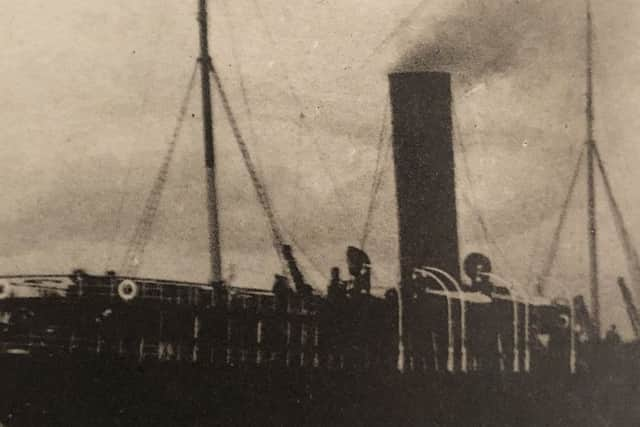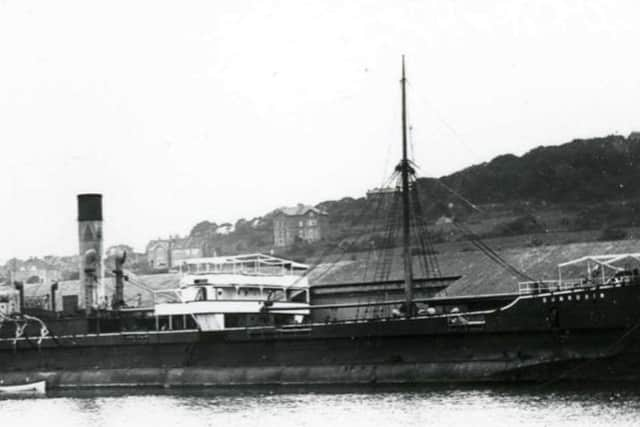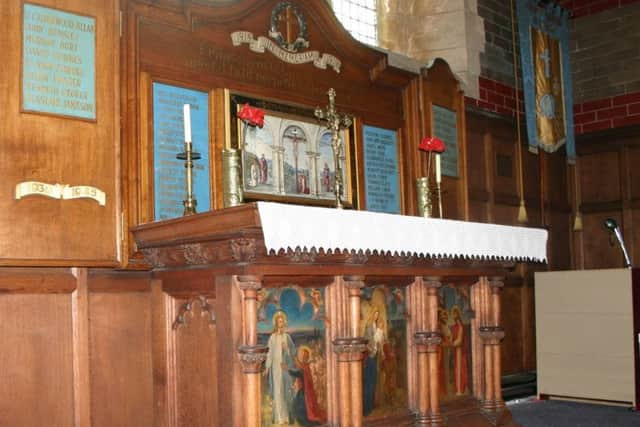The tragic tale of forgotten Falkirk seafaring hero Henry Ison


He had just moved to the area, and rightly suspected there was real history waiting to be discovered.
However while he dismisses his efforts as being those of “a real amateur” the amount of detail he has been able to compile is impressive - spelling out the salient facts behind the life and death of a redoubtable shipmaster.
Advertisement
Hide AdAdvertisement
Hide AdLorne traces the story: “The building was home to Henry Ison, originally from Teignmouth, who headed to London with wife Ellen to work with several shipping companies before joining the Grangemouth-based Carron Line in the early 20th century.


“It was his bravery as captain of the Carron Line steamship, SS Grange, which would see Ison become a local celebrity in Falkirk, even though his name is all but forgotten in the town today”.
Lorne explains that the famous Carron Company Ironworks created its own shipping line, with steamers making the three times a week journey between Grangemouth and London with the company’s products - and passengers - on board.
Promoted to captain, Ison, along with Ellen and son Harry, moved north, settling in Falkirk at Kethock, Gartcows Road.
Advertisement
Hide AdAdvertisement
Hide AdHe was at the helm of the SS Grange on Hogmanay 1908, as it left Grangemouth for London, with 32 crew and 16 passengers.


Built to order for the Carron Company, the Grange had already been involved in several serious incidents. In 1904 it was hit by a shell from HMS Thrush during target practice in severe fog in the Firth of Forth.
This time the unlucky ship foundered in a storm 34 miles off South Shields at 6am on New Year’s Day.
Lorne picks up the story: “With water flooding into the forward hold at a rate that rendered the Grange’s pumps useless, Captain Ison ordered the transfer of all hands to the ship’s lifeboats, joining them when the evacuation was complete.
Advertisement
Hide AdAdvertisement
Hide Ad“Ison quickly realised that the lifeboats, and therefore the passengers and crew, wouldn’t see out the storm.


“With the North Sea pouring over her, he bravely returned to the Grange, using what little steam pressure remained to blow the ship’s whistle and attract the attention of a passing fishing boat”.
A cutting from the Newcastle Evening Chronicle, dated 1st January 1909 and discovered in the Falkirk Archives at Callendar House, relates: “The trawler Eazer of Hartlepool arrived in the Tyne this afternoon and landed the crew and 16 passengers of the steamer Grange, of Grangemouth, the vessel having foundered north east of the Tyne at about 6am this morning.
“On being landed, the crew were taken to the Tyne Sailors Home at North Shields, where the superintendent provided them with dry clothing and creature comforts.”
Advertisement
Hide AdAdvertisement
Hide AdA Board of Trade enquiry absolved Ison of any blame, but despite his heroism he spent several years ashore working as a clerk.
Then, on the outbreak of the First World War, he was able to return to sea as a shipmaster with the Mercantine Marine.
Disaster struck on November 24, 1917, when Ison was commanding the SS Dunrobin on its return journey from Almeria in Spain with a cargo of iron ore and grapes.
In the English Channel the ship suffered a direct torpedo hit from the German submarine U-53, sinking with the loss of Ison and his 30 crew. His body was never recovered.
Advertisement
Hide AdAdvertisement
Hide AdArchives discovered at Falkirk’s Christ Church on Kerse Lane, where Ison was a member of the congregation include First World War magazines intended to keep local people informed about parishioners who had joined up.
Lorne says: “An issue from 1916 describes Ison as ‘a man who all at Christ Church deservedly respect, still on the high seas bravely facing dangers’”.
Then in early 1918 the magazine reported Ison’s death, commenting: “We extend our deepest sympathies to Mrs Ison and Sergeant Harry Ison in the loss of Captain Henry Ison, who was recently torpedoed at sea.”
Lorne says: “He’s described as an ‘essentially fearless and patriotic as a man, and a very staunch churchman. Throughout this community and beyond he was loved and respected. On the high seas he acquitted himself with great distinction and it is gratifying to learn that a posthumous honour from the Admiralty is to be conferred on him’.”
Advertisement
Hide AdAdvertisement
Hide AdThere is a memorial to him in Camelon cemetery, and his name appears on the war memorials in the Christ Church in Falkirk and at Tower Hill in London.
Lorne concludes: “Ellen Ison remained on Gartcows Road for many years before moving to St Abbs, Coldingham, passing away there in 1929. Son Harry returned from France after the war and stayed in Falkirk, becoming a coal merchant and living on nearby Learmonth Street until his death in 1966.
“Henry Ison might not have been born a Bairn, but you wouldn’t have meddled with him. His bravery deserves to be remembered in the town, more than a century after he disappeared beneath the waves of the Channel forever”.